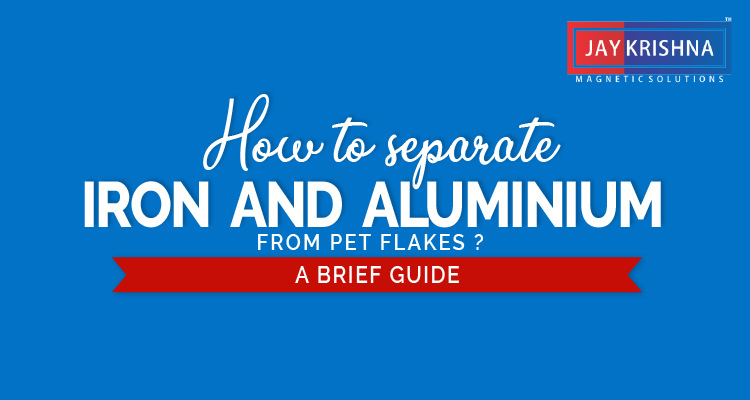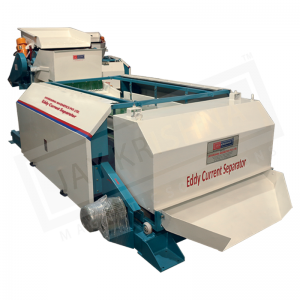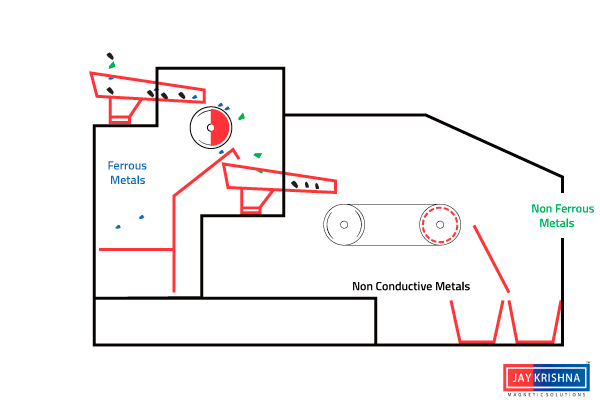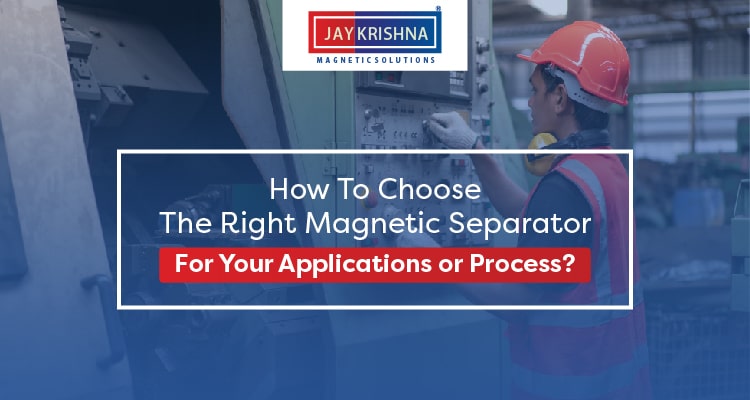How To Separate Iron and Aluminium From Pet Flakes? – A Brief Guide

India generates approximately 15.5 million tonnes of plastics each year for the widest range of applications. This diversity ranges from short-life packaging of electronic devices and household items, to long-life products for the automotive and construction industries. Most frequently used plastics are Polyethylene terephthalate (PET), Polyethylene (PE), Polyvinyl Chloride (PVC), Polypropylene (PP), Polystyrene (PS) and Acrylic (PMMA). These types of plastics play the most important role in processing of material and for product recycling.
Out of the 15.5 million tonnes, approximately, 5.5 million tonnes of plastic goes for recycling. Sorting plastics from packaging (consisting of PE, PP, PS and PET) is necessary so that it can be sold for further processing to be manufactured into recyclate, ground material or fibres. In this process, it is necessary to separate out contaminants such as iron, aluminum and foreign objects and to create high-quality polymer concentrates. For reliable separation of contaminants from PET flakes the eddy current separation method is used. Eddy current enables PET bottles to be free of all foreign substances.
Working Principle:
Eddy current separation takes the principles of electromagnetic induction in conducting materials, to separate non-ferrous metals by their different electric conductivities. The main principle is that ‘an electrical charge is induced into a conductor by changes in magnetic flux cutting through it’. Moving permanent magnets passing a conductor generates the change in magnetic flux. The basic set up is to have the non-ferrous scrap on a conveyor belt. The conveyor passes a rotating drum, inside of which is a much faster-rotating magnet block (up to 4000 rpm). The magnet block causes the changing magnetic flux.
When the conducting particles move through this changing flux on the conveyor, a spiraling current and resulting magnetic field are induced. This magnetic field of the metal particles interacts with the magnetic field of the rotating drum. The interaction gives the particles kinetic energy. The scrap particles are thrown off the end of the conveyor with varying energies, causing different trajectories depending on the conductivity of the particle.
The size of the particle and the direction of rotation of the drum can be changed to vary the degree of separation. Small particles can be separated owing to the degree of electrical conductivity. The most conductive materials interact the most with the magnetic field and have the longest trajectories. Aluminium has the highest conductivity for a given weight at ambient temperature than any other element. Non-metallic elements such as PET flakes and paint do not interact with the magnetic field at all and fall off the end of the conveyor belt with no change in energy.
Advantages of using Eddy Current Separator
● High efficiency of separating ferrous metals and non-ferrous metals from inert materials
● High yields of non-ferrous metals recovery
● Pure quality of end materials quality
● Minimum loss to valuable materials
● Highly precise sorting
● Reliable and long-term operating
● Electrical blackout backup for industries
● Security systems for the magnets to ensure safety of staff and longer life for the magnets
● Minimal and easy maintenance.
● Decrease in labour costs and thus increase in processing capacity and overall profitability
Application
Apart from separating aluminium and iron from PET flakes, Eddy current separator principle works best for the following industries in separation:
● E-waste dismantling especially in refrigerator dismantling line
● Aluminum cans and ferrous metals
● Non-ferrous metals from the bottom ash of boiler
● Aluminum and copper blocks from the sections of abandoned cars
● Non-ferrous metals from recycled plastic doors and windows
Watch Video:
If you are looking for the eddy current separator for your pet bottles and pet flakes recycling plants visit our website: www.jkmagnetic.com
We also manufacture a wide range of magnetic separators for recycling and various other industrial plants. Check our website for further product range.



